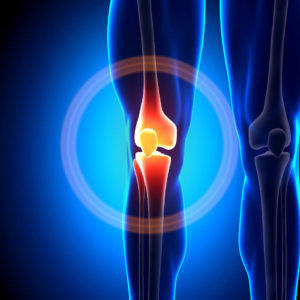

In 5 of these, quantified electromyography (EMG) of the vastus medialis and lateralis portion of the quadriceps muscle was also monitored. Intraarticular hydrostatic pressure and maximal voluntary isometric extensor torque were measured simultaneously, while altering the intraarticular fluid volume in 9 knee joints. After normalization of injected volumes according to the V50, pressure volume curves became similar. Since capsular elastance was difficult to standardize, we introduce a measure of joint capsular stiffness where the intraarticular volume yielding a pressure of 50 mm Hg (V50) is used. Seventeen knee joints with effusive arthritis and different degrees of radiological cartilage involvement in 13 patients with chronic arthritis were examined.

Joint capsular stiffness together with synovial fluid volume determines Pia at rest. At Bally Total Fitness she trained clients of all ages for fat loss, muscle building, fitness and improved health.Increased intraarticular hydrostatic pressure (Pia) may inhibit juxtaarticular muscle function, obstruct blood supply to joint structures and promote anoxic joint destruction in chronic arthritis.

Journey-Healing-Science-Applied-Kinesiology/dp/0964421763 Lorra Garrick is a former personal trainer certified by the American Council on Exercise. He has also created the Power Kinetics® Exercise Program and line of nutritional vitamins and performance supplements. Charles has helped thousands of patients and taught over 1,200 doctors during his 30+ years of practice. Lay off the suspected offending activity for a few weeks, ice it, and then as it begins to feel better, you can gradually return to your exercises – hopefully a few pounds lighter too. The knee joint is actually the most unstable joint in the body.Ī weight reduction of just 10 percent can make a significant difference. If you think that your strange symptom was brought on by certain exercises, you should abandon those exercises for a while and see what happens.Ĭarrying excess body weight, in combination with high impact exercise such as jumping, or vigorous squatting, might aggravate the knee joint. “It can also be due to a weakness of the medial quadricep muscle, relative to the outer quadriceps.” Another Cause “Turning your leg and foot outwards when exercising, especially during leg extensions or lunges, are a common cause. Charles explains, “In over 33 years in practice, predominantly a sports injury practice, I have found that most patella tracking problems occur due to a rotated tibia bone which alters the movement (tracking) of the patella. Women are more likely than men to experience a tracking issue with the patella, which can lead to pain, a feeling of fullness in the knee, and swelling.īut sometimes there may only be the funny feeling and the swelling.ĭr. “Resting it only helps because you are not using it, but rest alone does not fix the underlying cause of the knee problem - specifically the misalignment of the knee joint itself.” What about a petallar tracking problem? “Over time the tibia bone rotates slightly out of alignment and needs to be realigned through a precise chiropractic or osteopathic adjustment. “These subtle movements include getting out of a chair or car seat and going up stairs. “This frequently happens insidiously through daily activities where you turn your leg and foot out repetitively. “The most common cause of non-traumatic knee swelling is a misalignment of the large tibia bone that comprises the lower part of the knee joint,” says Eugene Charles, DC, Diplomate of applied kinesiology and author of “Journey to Healing: The Art and Science of Applied Kinesiology.” Mildly Swollen but Painless Knee: Possible Cause It may feel like there’s a bandage wrapped around it when you bend it, yet there may not be any pain. The mild swelling, which is fluid, will make the knee feel a bit funny or “full.” This will become most apparent when you’re walking up or down stairs, and when you bend the knee. If your knee is swollen but there’s no pain, this doesn’t mean it won’t feel strange. Getting hit in the knee can result in pain but not necessarily swelling.īut a little swelling with NO pain? Now that is odd. What could be the reason your knee is suddenly swollen and oddly painless, but there’s been no acute trauma like twisting it or falling on it?Ī sprained or torn ligament in a knee will result in swelling AND pain.


 0 kommentar(er)
0 kommentar(er)
